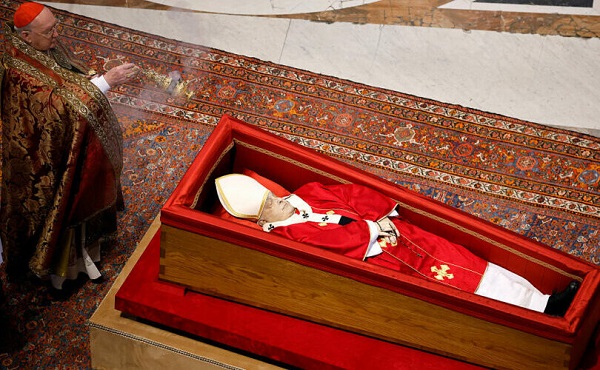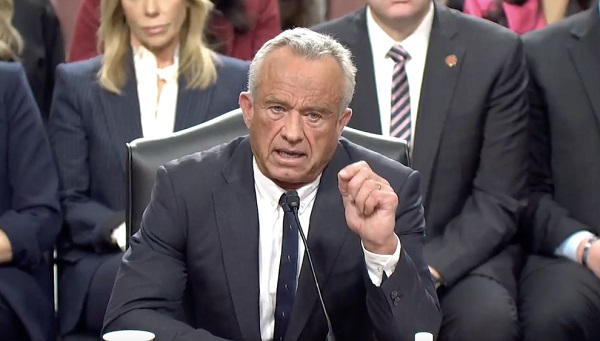A US Customs and Border Patrol agent monitors the barrier separating the U.S. and Mexico in Nogales, Arizona. (Photo: Manuela Durson)
By Todd Bensman
Originally published by Jewish Policy Center
In the early morning hours of May 3, a Jordanian immigrant who illegally crossed the US-Mexico border a month earlier joined with another illegally present Jordanian. Together they drove a large box truck to the entry gates of Quantico Marine Corps Base in northern Virginia.
The driver announced they were Amazon subcontractors there to make a delivery to the Quantico town post office just inside. But after neither could produce credentials and were denied entry, the driver hit the gas in an apparent attempt to plow the truck through and into the base’s target-rich interior. Quick-thinking military sentries raised automatic road barricades, arrested the pair for trespassing, and turned them over to US Immigration and Customs Enforcement (ICE).
Local media soon reported that one of the Jordanians was on the FBI’s terrorism watch list.
The White House and all involved federal agencies have steadfastly stonewalled questions as to whether an illegal, border-crossing alien from Jordan on the FBI’s terrorism watch list had just attempted a jihad-motivated attack on US soil for the first known time. It is an often ridiculed scenario, but one that government experts have been warning about, including the Department of Homeland Security’s (DHS) own 2024 threat assessment, since the worst mass migration crisis in US history began on January 20, 2021 – President Joe Biden’s Inauguration Day.
Among the estimated seven million illegal immigrants from 160 countries around the world that Border Patrol agents encountered in just the few years since were 362 illegal immigrants who were on the FBI’s terrorism watch list – all detained.
But the fact that one of these border-crossing Jordanians was reportedly on the FBI’s watch list – and nevertheless was NOT detained but left free inside the country to ram a large truck through into an important military base – is emblematic of a serious new kind of national security threat to the US homeland.
Mohammad Kharwin
In at least seven recent cases, Border Patrol agents, overwhelmed by the crisis, have accidentally released illegal border-crossers who were on the US terror watch list. Their belated discoveries prompted panicked nationwide manhunts to round them up before they could conduct terror attacks. Was the Jordanian at Quantico one of them? No one knows.
But a twice-freed Afghan national man was the most recent of these. The 48-year-old Mohammad Kharwin roamed America for 11 months between his border crossing and his capture. This case and too many others demand that the federal government acknowledge emergence of a patterned new chronic national security emergency requiring elevation to the highest priority within the intelligence community, federal law enforcement, and Congress.
An overwhelmed Border Patrol freed Kharwin into America on March 10, 2023, before agents could confirm the FBI watch list hit that initially flagged him and then, a swamped Texas immigration court freed a second time in February.
By current public accounts, an initial Border Patrol database check flagged Kharwin for membership in Hezb-e-Islami, which the US Director of National Intelligence (DNI) describes as a “virulently anti-Western insurgent group.” He illegally crossed the California border in March 2023, one of 23,286 illegal aliens caught crossing that month in what would turn out to be a record-breaking year for the agency’s San Diego Border Sector. All told, there were 230,941 illegal crossers caught in 2023, up nearly 60,000 from 2022 and 90,000 more than 2021.
That extraordinary traffic no doubt strained all normal Border Patrol counterterrorism and vetting processes.
Instead of keeping Kharwin detained as a “special interest alien,” tagged until standard face-to-face interviews and corroboration of the initial hit was complete, Border Patrol agents – under orders from Washington – waved him through like millions of other illegal crossers on “Alternatives to Detention” (ATD) personal recognizance papers, where crossers agree to voluntarily report later to ICE in a city of their choice.
NBC reports that Border Patrol never even informed ICE of the initial FBI watch-list flagging, which is evidently how the same collapsed border management system missed a second opportunity to catch Kharwin in late January of this year, when he showed up before an immigration judge in a Pearsall, TX, ICE detention facility for a hearing. Perhaps because ICE still didn’t have the initial terrorism flag hit, that agency’s court lawyer representative did not report it to the judge, or appeal, when Kharwin was ordered released on $12,000 bond for a distant 2025 hearing.
“The judge placed no restrictions on his movements inside the US” in the meantime, NBC reported.
Somehow, the FBI figured all of this out and got word to ICE agents to find and arrest Kharwin, which they did a month later, on February 28, in nearby San Antonio.
And Others
To date, only one federal investigation has produced a public report branding the problem, remarkable but forgotten or given short shrift by major US news media, although I did write about it. That eye-opening document was the DHS inspector general’s office report about the April 19, 2022 crossing and mistaken release of a Colombian on the FBI watch list. ICE agents were not able to track him down to Florida for two long weeks.
Its key finding was that Border Patrol and ICE agents couldn’t do normal counterterrorism protocols because they were simply too “busy processing an increased flow of migrants.”
But these six other cases qualify as investigation-worthy.
In February 2024, North Carolina authorities arrested an immigrant, Awet Hagos, reportedly from Eritrea, for allegedly firing a rifle outside a Carolina Quick Stop store in the small town of Eure. He then attacked responding Gates County Sheriff’s deputies and barricaded himself in a four-hour standoff with them. Sheriff Ray Campbell reported that an ICE fingerprints check revealed that Hagos was on the watch list, the sheriff later told local news. North Carolina’s Lt. Gov. Mark Robinson, running for the governor’s office this November, penned a letter to President Biden demanding answers about Hagos. But these moves drew scant coverage from local newspapers and gained no known traction.
In February 2024, a Pakistani illegal immigrant on the watch list who had crossed from Mexico into California, was accidentally released for a day before US authorities, luckily, uncovered the release error and caught up with him.
In late 2023, New York police arrested a Senegalese man wanted in his home country for “terrorist activities” who somehow got into the American interior.
In 2022, Border Patrol waved through a watch-listed Somali member of the al-Shabaab terrorist group near San Diego. He was free for nearly a year before authorities untangled their mistake and finally picked him up in Minneapolis.
Also in 2022, ICE released an FBI watch-listed Lebanon-born Venezuelan who had crossed from Matamoros into Brownsville, TX. Washington ordered him released on grounds that the man was at risk of catching Covid. This release occurred against ardent FBI recommendations that he remain in detention because he was both dangerous and a flight risk. FBI documents on this case leaked, no doubt out of an overabundance of frustration among those in the intelligence community who dealt with it. I have them.
A late 2021 accidental release case of Yemen national Ahmed Mohammed Ahmed shows that Mexico too is struggling with the Biden-fomented mass migration crisis. Mexico has long been a close partner of the United States in counterterrorism at the border. But in this case, Mexico released the Yemeni terrorism suspect without informing its US partners, resulting in a “Be On the Lookout” bulletin that made its way to me about a manhunt alert that went out on the Texas side of the border.
How Many Have we Missed?
Terrorism threat border lights have been flashing red for some time now just from the hundreds who were actually caught and detained, especially since the US Customs and Border Protection agency in March 2022 began publishing “Terrorist Screening Data Set Encounters” by the month on its public-facing website. Those began breaking all national records when the Biden government took office in January 2021, when apprehended illegal border crossers on the FBI watch list ballooned from a mere three during Trump’s last fiscal year in office to 15, then by another 98 in fiscal 2022, then 169 in fiscal 2023, and another 80 through April 2024.
That all those who were caught is less a positive national security accomplishment than an unacceptable sampling of much bigger flows of watch-listed illegal aliens coming into America who are not caught and handled. If some two million of these so-called “got-aways” went through since 2021 (like Kharwin evidently tried to, or possibly the Jordanian at Quantico), more suspected terrorists on the FBI watch list are almost certainly among them.
In recent months, the terrorism threat at the border has generated some public concern, but almost never explicitly about the preventable accidental releases of terrorist suspects authorities later had to chase down.
In September 2023, I testified about the accidental release problem before the US House Subcommittee on the Judiciary in juxtaposition with my 2021 book America’s Covert Border War, which revealed counterterrorism programs at the border that have kept the nation safe from infiltrated attacks for nearly 20 years. I told the members that Biden’s border crisis had severely compromised those old programs and caused a spate of accidental terror suspect releases, which elevated the threat of terror attack as a result.
Until then, concern was on the rise but never explicitly named accidental releases as a problem.
Threat Assessment 2024
The Biden Administration’s own 2024 Homeland Threat Assessment generally warns that “terrorists may exploit the elevated flow and increasingly complex security environment to enter the United States” and that “individuals with potential terrorism connections continue to attempt to enter the Homeland illegally between ports of entry…via the southern border.”
In recent testimony about what he regards as a rising terrorist border infiltration threat, FBI Director Christopher Wray told the Senate Select Committee on Intelligence that a “wide array of very dangerous threats…emanate from” the southwest border, including the designated terror group ISIS.
Despite the variably specific warnings about the border infiltration threat, the ever-growing number of known accidental-release cases such as Kharwin’s and the ones I earlier told the subcommittee about, remains broadly unrecognized as the unique emerging threat problem these cases indicate. Probably because no one has been killed yet as a consequence, few federal agencies or homeland security committee lawmakers seem interested in calling it out.
But why must blood run in the streets before something is done?
Triple Down
These cases demand a public accounting as well as a classified briefing to Congress if one hasn’t happened. Each demands a full investigation that produces not only recommendations for better counterterrorism but also consequences for those up and down the chains of command who perpetrated these failures.
If federal agencies won’t do the right thing, lawmakers in both houses of Congress should compel investigations into these accidental releases and turn up the political pressure with public hearings that force top officials to testify. They must propose legislation, send demand letters to DHS and other relevant agencies, and justifiably rant about this at their bully pulpits before it’s too late to do any of that, which it might well be.
Short of vastly reducing the millions-per-year border crossings by restoring former president Donald Trump’s discarded policies, the Biden Administration could at least be forced to triple down on its counterterrorism resources at the southern border.
Todd Bensman is Senior National Security Fellow at the Center for Immigration Studies and author of OVERRUN: How Joe Biden Unleashed the Greatest Border Crisis in U.S. History.















